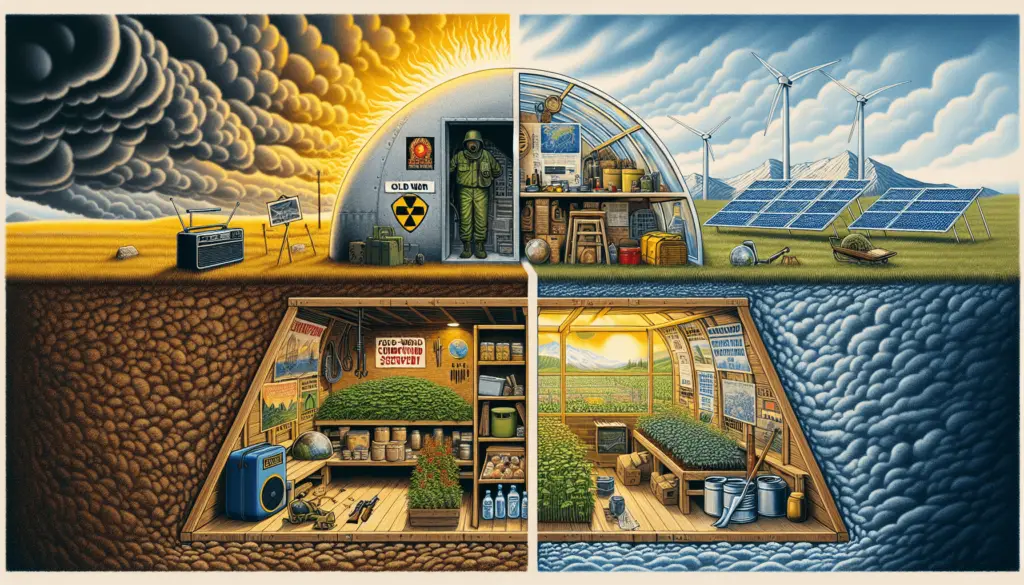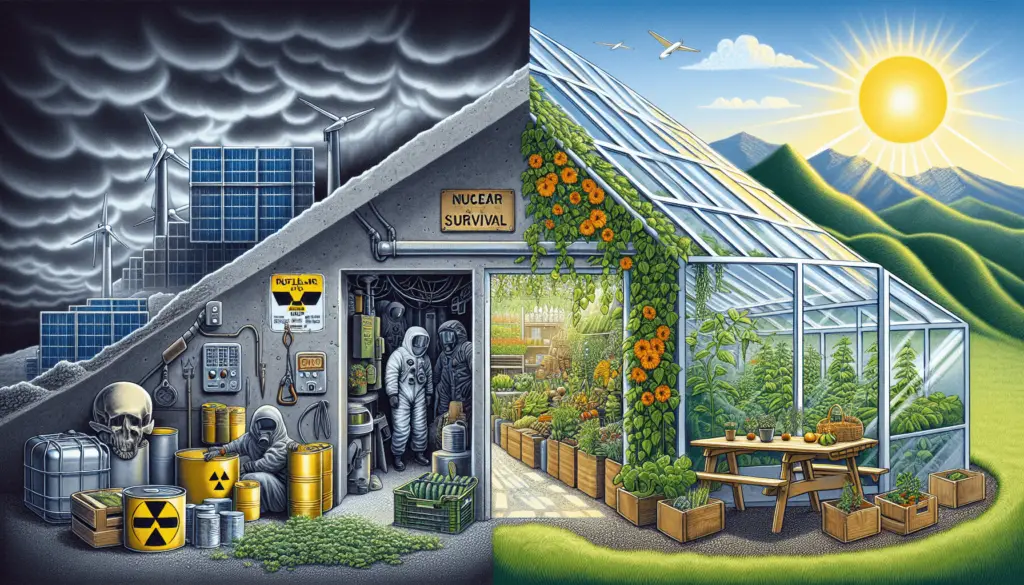Imagine a world where the threat of nuclear war hangs heavy in the air, where the survival of the fittest is not just a phrase but a way of life. Now fast forward to the present day, where the looming danger comes not from missiles, but from the ever-increasing climate crisis. This captivating article explores the fascinating evolution of prepping, from its humble beginnings during the Cold War era to the modern-day urgency driven by the realities of climate change. Discover how prepping has adapted and transformed over the years, as individuals strive to prepare for an uncertain future.
Introduction to Prepping
Prepping, short for preparedness, refers to the practice of taking proactive measures to ensure one’s safety and well-being in the face of potential disasters or emergencies. It involves being equipped and prepared with necessary supplies, knowledge, and skills to navigate such situations effectively. The reasons people engage in prepping vary, ranging from a desire for self-sufficiency and peace of mind to concerns about societal stability and natural disasters.
Prepping during the Cold War
During the Cold War era, the fear of nuclear war loomed large, and it greatly influenced the practice of prepping. With the constant threat of a nuclear attack, people sought ways to protect themselves and their families. Government initiatives and advice promoted the construction of fallout shelters, which were specifically designed to provide refuge from the devastating effects of a nuclear blast and subsequent radiation exposure. Additionally, stockpiling food and water was a common prepping strategy, as these supplies were essential for survival in a post-apocalyptic world.

Prepping in the Post-Cold War Era
In the aftermath of the Cold War and the declining threat of nuclear war, the focus of prepping shifted towards natural disasters. As communities experienced the devastating impact of hurricanes, earthquakes, and other catastrophic events, the importance of emergency preparedness became increasingly evident. The prepping subculture also grew during this time, with individuals sharing strategies, techniques, and resources to aid in disaster preparedness. Popular prepping strategies during this era included creating emergency kits, storing non-perishable food items, and learning basic survival skills.
Prepping in the Digital Age
The advent of technology has significantly impacted the world of prepping. Today, a wide range of prepping apps and online resources are available, providing valuable information and tools for preparedness. These resources offer guidance on creating emergency plans, tracking supplies, and learning survival skills. Social media platforms have also become important tools for preppers, allowing them to connect with like-minded individuals, share experiences, and build supportive communities. The digital age has made access to information and knowledge sharing easier than ever before, enabling individuals to become better prepared for potential disasters.

Climate Change and Prepping
As concerns over climate change continue to grow, prepping has adapted to address the challenges posed by these environmental shifts. The increase in extreme weather events and rising sea levels have led to a higher frequency and intensity of disasters. Consequently, prepping strategies have evolved to include preparations for floods, droughts, heatwaves, and other climate-related emergencies. These adaptations often involve incorporating climate-resilient practices, such as rainwater harvesting, sustainable gardening, and energy conservation. However, climate-related prepping also presents unique challenges, such as the difficulty of predicting and preparing for the complex and interconnected impacts of climate change.
The Psychology of Prepping
Understanding the psychology behind prepping is crucial to comprehending why individuals engage in this practice. Psychological motivations for prepping can include fear, anxiety, and a need for control in the face of uncertainty. The sense of security and preparedness that prepping provides can be a coping mechanism for individuals seeking to manage their anxieties about possible disasters. However, it is important to recognize that not all preppers have extreme beliefs or exhibit irrational behavior. The stereotypes and misconceptions surrounding preppers often stem from media portrayals, which sensationalize the practice and overlook the practical and rational motivations behind it.
Prepping as a Lifestyle
For many individuals, prepping extends beyond a mere safety precaution and becomes a way of life. The integration of prepping into everyday routines involves sustainable living practices and a focus on self-sufficiency. It often encompasses concepts such as homesteading, where individuals strive to live off the land and decrease their reliance on external resources. Embracing alternative energy sources, such as solar power and wind turbines, is also a common aspect of prepping as it aligns with the principles of self-sustainability and resilience.
Prepping and Community Building
Prepping goes beyond individual preparedness and emphasizes the significance of community in times of crisis. Forming prepper networks and support systems allows individuals to pool resources, knowledge, and skills. Collaborative preparedness efforts, such as neighborhood emergency response teams, enhance community resilience and enable effective disaster response. By fostering a sense of collective responsibility and cooperation, prepping promotes a culture of preparedness that benefits the community as a whole.
Prepping in Popular Culture
Prepping has become a prevalent theme in popular culture, often portrayed in movies and TV shows. Unfortunately, these portrayals often perpetuate survivalist and doomsday prepper stereotypes, portraying preppers as eccentric individuals with extreme beliefs. However, as prepping has become more mainstream, the perception is gradually shifting. Increasingly, prepping is recognized as a legitimate and practical approach to preparedness in the face of potential emergencies. The influence of media has both positive and negative implications, as it can both raise awareness about the importance of preparedness and perpetuate misconceptions about preppers.
The Future of Prepping
As the world continues to face new threats and challenges, prepping remains relevant in ensuring personal and community safety. Anticipating future risks, such as pandemics, cyber-attacks, or geopolitical instability, will shape the evolution of prepping strategies and technologies. Advancements in areas such as renewable energy, water purification, and communication systems will continue to play a crucial role in enhancing preparedness and resilience. Integrating sustainable practices into prepping will become increasingly important, as addressing climate change and reducing environmental impact remain vital considerations for the future of prepping.
In conclusion, prepping has evolved significantly over time, reflecting the changing nature of threats and societal concerns. From the fear of nuclear war during the Cold War to the focus on climate change and sustainable living in the present day, prepping has adapted to address the challenges of its time. It is a practice driven by a desire for self-sufficiency, community resilience, and the recognition of the importance of being prepared for potential emergencies. As the future unfolds, prepping will continue to evolve, incorporating advancements in technology, sustainable practices, and a growing recognition of the importance of community in times of crisis.
